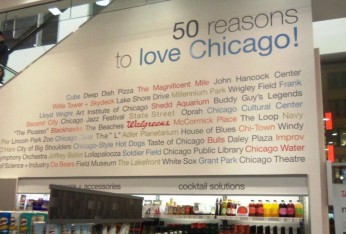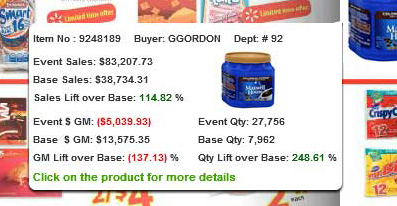The following post is PART III of a five part series on how to become a retail marketing superhero. We’ve leveraged the collective experiences from our most successful clients, some of the top retailers in the world, to help you the retail marketer achieve ultimate success in your career and for the business. This series will cover everything the retail marketing leader needs to become a superhero in today’s omni-channel world. Download the complete ebook here!

As a marketing leader, you are challenged to maintain alignment between the marketing and merchandising teams. While marketers are responsible for translating company strategy into marketing messages, merchants are responsible for setting product strategy that supports retail programs and are matched to market demand. Unfortunately, marketers and merchants are often misaligned. Indeed, the potential for conflict, miscommunication and under-performance is exceedingly high.
The main issue is that marketers and merchants don’t have proper visibility into each other’s plans. Additionally, the parties struggle to communicate and collaborate effectively. Plans, schedules and program themes may be misaligned. Meanwhile, benchmarks for determining sensible merchant requests from marketing may also be missing – leading to sales forecasts merchants are unlikely to meet.
Indeed, this communication breakdown often results in under-performance when product and advertising aren’t aligned. At the store level, this misalignment leads to stock outs, lost sales and trapped inventory. At the corporate level, it means layoffs.
But, hope is not lost. Solutions exist that can end the back and forth between marketers, merchants and inventory managers as well as the ensuing friction and failure. All parties can gain real-time access and extensive visibility into each other’s plans. This brings a systematic approach to promotion activity. Smart approaches enable clarity and consistency. They also bring rigor and discipline as decision-making becomes data-driven. Unsurprisingly, greater precision of this sort results in greater lift in the field.
Before reaching these new heights there are a few key actions you must take first:
Get Pricing Strategy Right!
A major strength of leading retailers is the consistency in omni-channel promotional pricing strategy. These retailers show strong communication between merchandising, planning, marketing, and inventory to create a stronger cross-channel promotions strategy.

Take an Interest In Merchandising!
The most successful retailers have merchandising and marketing together in a weekly alignment meeting – especially the planning meetings. Retailers who cannot afford to miss any opportunities insist that a marketing analyst sits in every merchandising meeting. Those who under-perform have separate marketing and separate merchandising meetings. Ditch the siloed approach and make merchandising your best friend.
Think Localization!
Over 70% of the leading retailers invest in greater localization. How do they support that? They’ve ditched old methods and embraced an integrated marketing calendar and merchandising technologies that help them combine merchandising, signage, displays, events, and an omni-channel presence into a unified strategy.
At the end of the day, the two core issues come down to visibility and strategy. Most retailers do not have a formal marketing or merchandising strategy process nailed down. Even those retailers who have marketing and merchandising strategies in place, aren’t sharing it well with their peers. Why? More often than not, it is because they lack the technology to facilitate the collaboration – and the technology helps define the processes.
Marketing needs a central calendar that highlights what promotional events will be happening and when, tied to theme, length of time, visuals, etc. And, merchandising needs a central location that provides information as to what specific products should be promoted and at what price point, as informed by historical pricing and promotion data.
Case in Point: Performing with a Scorecard
Take the case of one large retailer in the Midwest. It was relying on subsidy dollars to drive sales and inventory turns on a grand scale. In the absence of a shared repository of marketing resources and a scorecard reflecting marketing performance, no one had visibility into the true impact of these subsidized campaigns.
When a performance scorecard went live as part of a solution provided by CrossCap, it suddenly became clear how dependent merchants were on subsidy dollars to attain their margin objectives. Furthermore it demonstrated the promotional misalignment between the marketing strategy and the subsidized promotions. This finding completely changed criteria for supporting merchants with subsidy dollars.
Ultimately, the shift in behavior made possible by visibility into marketer-merchant arrangements girded the company for difficult economic times. With the valuable insights and measures it attained, the retailer became far less dependent on subsidy dollars alone to meet its objectives.
One Key Question
So what comes first: Defining marketing or merchandising strategy? This is the most common question retailers ask when the alignment issue arises.
In most cases, the marketing strategy is defined based on seasonal events and holidays. At the same time, the merchandise strategy is defined based on business focus, growth strategy, customer and market insights, and what worked and what didn’t work in the past. Both plans need to be integrated in the very early stages creating an output that defines the seasonal themes along with the merchandise focus and media allocation across the different businesses. The most successful retailers create plans at least six months before the planned selling season.
To achieve alignment between marketing and merchandising, plans need to be aligned at the macro level (based on seasonal themes and merchandise focus) by leveraging a collaborative marketing calendar and detailed promo history and pricing optimization metrics, but they also need to be aligned at the micro level (promotional plan for events) with collaborative ad and promo planning tools. The macro level ensures strategy is aligned while the micro level ensures execution is aligned.
Get aligned and get results!
Learn more about CrossCap by visiting our site or by contacting us.
If you want to learn more about basic product pricing formula take a look at this guide
About the Author:
Darrell Fry
Retail guru, Darrell Fry, brings 36 years of valuable retail experience to CrossCap, garnered primarily through his position as VP of Advertising Production at both OfficeMax and Sears. Darrell was inspired to join CrossCap in 2007 based on his experience installing and utilizing our system as one of our clients. Sold by the efficiency and originality of CrossCap’s product, Darrell holds that unlike many EMM Systems, CrossCap’s system “thinks like a retailer”. As VP of Customer Experience, Darrell is essential towards helping clients utilize our software capabilities most effectively and developing client work processes that are based on best industry practices.

